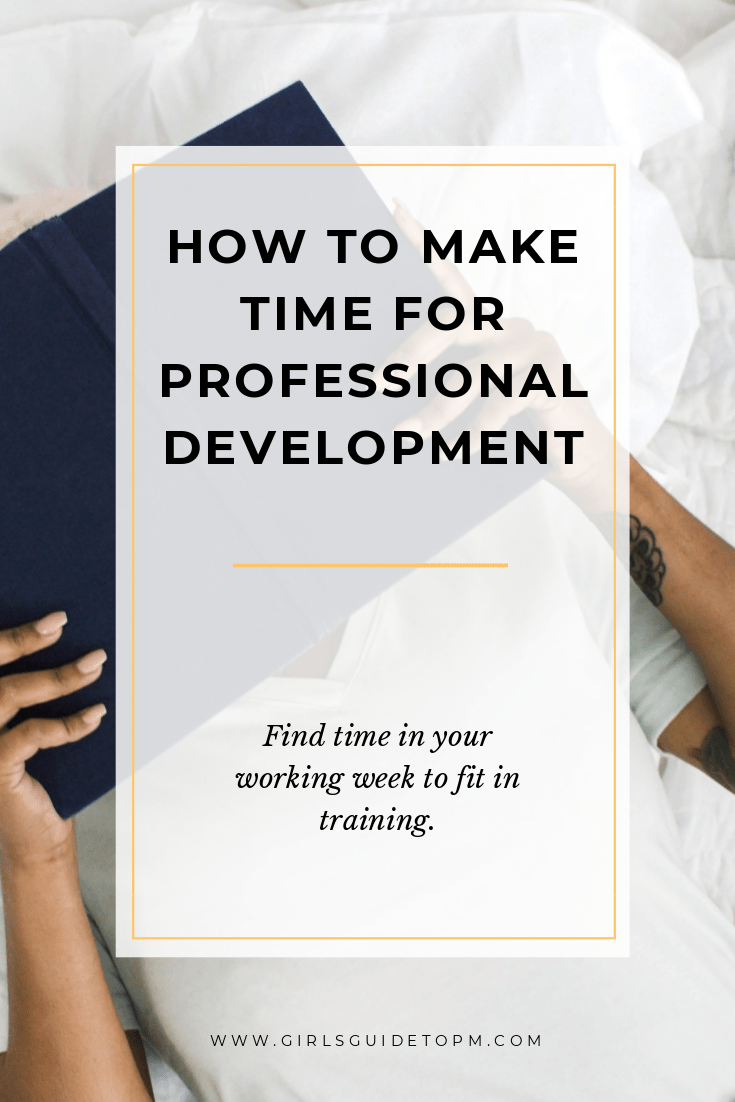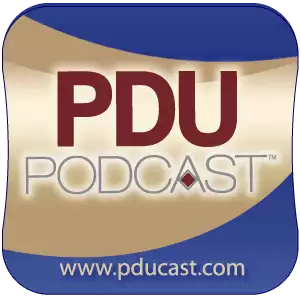How to make time for professional development
This blog is reader-supported. When you purchase something through an affiliate link on this site, I may earn some coffee money. Thanks! Learn more.
The best project managers invest time in professional development. It might not always be easy, but continually learning is one of the sure-fire ways of staying on top of the trends in project and program management.
Finding the time to do professional development and keep your skills up can also help build your CV. If you ever find yourself stuck for work, you’ve got a rich background of formal and informal training to supplement your experience.
But I get it. Between work, family, friends, and everything else, making time to do any kind of ongoing learning is difficult.
Below are some options for finding time to fit training into your working week, including how to collect those Professional Development Units project managers need to maintain your PMI credentials like Certified Associate in Project Management (
Let’s start with what to do when you are very short of time and just need a quick injection of new information.
Quick opportunities for busy weeks
You should be able to fit quick professional development sessions into your working week.
Not every week, but consider doing at least an hour of learning, training or development activities per month. There are plenty of easy ways to earn PDUs.
Examples of quick-fix training opportunities include:
- Reading magazine articles
- Reading blogs and other websites
- Listening to podcasts
- Webinars (free or paid, real-time or recorded to watch at your convenience)
- Networking breakfasts that include a presentation
- Evening seminars organized by your local project management group.
The podcast I recommend for project managers is the PDU Podcast.
I like it because it’s practical, real-life tips from experts, and the episodes just turn up once you’ve subscribed so you don’t have to remember to get them. You can fit in an episode on your commute or during a lunch break.
Earn 60 PDUs by listening to these podcasts on your phone, mobile device, or computer. Learn from 25 project management experts when it is convenient to you, covering Ways of Working, Power Skills and Business Acumen.
Save $40 with the code Aug25PDU during the month of August 2025!
Advantages of quick fix training opportunities
- Focused sessions on a single topic; answering a particular challenge you have in the moment for your current project.
- Helpful when you have a gap in your records, for example when you need to find out how get those tricky leadership PDUs.
- Collecting PDUs in 1-hour chunks. Just remember to write them down so you can claim them!
Whether you are looking at how to earn PDUs for CAPM or another PMI credential, you can fit them in when you approach your development the ‘quick fix’ way.
Challenges of quick fix professional development
Here are the main challenges of approaching all your professional development with this ‘quick fix’ mentality.
- You need to know what you want to learn and then seek out a reliable source.
- There is a risk that you – for example – attend an online presentation on the subject of something you already know lots about just for the sake of saying you’ve done some development this week.
- It can take a while to find a reliable list of ‘go to’ places for this kind of information. Even if you have your favorite industry magazines and websites you are still reliant on what they have published recently.
- You might not be able to quickly find something relevant to what you need to know. When you need help on project risk management, for example, you will have to seek out back issues or previously published and recorded webinars to cover the topics that would meet your learning objectives.
This kind of learning is good for building knowledge but not necessarily skills. You need more time to practice skills: you aren’t going to change your behavior to become an expert in conflict resolution by listening to a presentation at a PMI Chapter event, but you might get the knowledge you need to take it further yourself.
If you are short of time and need to get all your PDUs in a hurry, here’s my complete guide on how to earn PDUs quickly.
How to make time for training that requires some commitment
Into this category I put:
- Formal classroom-based courses of up to one day in length
- Online learning like the excellent short courses at OnlinePMCourses
- Reading books. You can’t fit reading a whole project management book into your lunch break, but you could digest it over the course of several days’ commute
- Conferences and seminars.
So how do you make time for these development and training opportunities?
Schedule it.
That’s the “secret”. Put your learning time on your calendar and it will happen. Give yourself permission to invest in your professional development. It’s OK, honestly!
Book some meetings with yourself to work through online project management training. Book a day out of the office for a classroom course or a conference. The world won’t stop, your project will still be there tomorrow.
Advantages of training requiring commitment of up to a day
- When you need to take a break from the day-to-day and really immerse yourself in something new.
- When you want to meet people in a similar situation (although you may not create lasting relationships if you’ve only spent six hours with them)
Challenges of this type of development
- You have to plan these in advance. It’s very difficult to spontaneously decide to a day-long course in project risk management, for example
- You may have to arrange cover for your project
- You may have to wait until the relevant course is scheduled to run.
Looking for more easy-to-do development ideas? Here’s my complete guide to simple ways to do professional development.
How to make time to study for a project management certificate
Credential courses are typically three to five days long and include boot camps, exam practice, and may even include the exam itself. At the end, you’ll feel as if you’ve got a good grounding in the subject and are prepared to sit the exam.
The great thing about courses that take you out of the office for a few days or even a week is that you get the chance to have a complete change of scene. You mix with other people who have similar challenges to you.
This is also the category where self-study falls. If you are working towards a certification at your own pace, you’ll need the commitment to see it through.
- The PM PrepCast (world-class online training from a company that really cares about student success)
This complete self-directed PMP Exam course is our top pick. The Elite PLUS bundle includes the PMP training course, the PMP Exam Simulator, The Formula Guide, and The StudyCoach Guidebook, giving students a PMP Study Plan to follow.
Purchase the PMP PrepCast Elite and receive the PM StudyCoach Guidebook for free with code Aug25 during the month of August 2025!
You need a plan to get the time for this kind of study. Draw up a study plan (here’s a guide on how to do it). Whether you are aiming for
Read next: Specific tips for how to balance work and PMP® study
Then stick to your plan.
Advantages of certificate training
- PRINCE2®,
PMP ® prep courses, other courses that end in a credential or certificate - Study periods that offer a deep-dive into business subjects of up to one week.
Challenges of long/certificate training
- It can be difficult to find the time to leave the office for that long
- Those courses don’t run every week and they may fall at times when it’s difficult to leave the office due to project commitments.
- You’ll also most likely be expected to keep up with your day job while you are on the course. This can be really hard on courses where you finish relatively late each evening with homework or preparation to do for the next day. It can be tiring to try to do your day job on top
- If you are going down the self-study route, then you have to find the time to work on your assignments little and often on a regular basis. This can actually be harder than finding a clear week where you can be out of the office!
How to find time for long-term study
Finally, there are degree courses like an MBA or Master’s. There are also longer-term study options that could take a year or more like NVQs or diplomas.
The study time for these needs to be woven into your daily life. You need a regular schedule of time that allows you to work on assignments and commit over many months.
This might mean giving up other hobbies to make time to study instead. While the payoffs can be significant, the time commitment is also significant.
Tip: Check to see if your employer has policies on supporting employees who are studying for professional certifications. You may find they can offer you study leave so you don’t have to use your annual leave allowance for time off work for exams.
Advantages of long term development
- In-depth study, often with an element of being able to shape your own assignments based on what topics you are personally interested in
- National and internationally recognized qualifications
- Career building for mid and senior level posts.
The challenges of long-term study
- The cost. This type of training can be expensive. Really expensive if your company won’t contribute towards it. You need to be sure it’s the right decision for you
- You have to be very self-motivated. The longer the period of training or study, the more you have to plan your time
- Your interest in the subject matter. How will you feel about the subjects you have chosen when you are three years into your course?
What’s the right length of training to make time for?
So what is the right length of training that you should be fitting into your work life?
Probably all of them.
If you are serious about building your career in project, program, or portfolio management, you’ll want to spend some time on all of these activities (with the exception perhaps of a higher education qualification).
You should have a plan for short, medium, and long-term personal development. For that, you will need a mix of training and learning opportunities from the hour-long free webinar to a self-study course to pass a credential over the period of several months.
For more options for professional development, check out my free webinars and training courses.
Pin for later reading:



